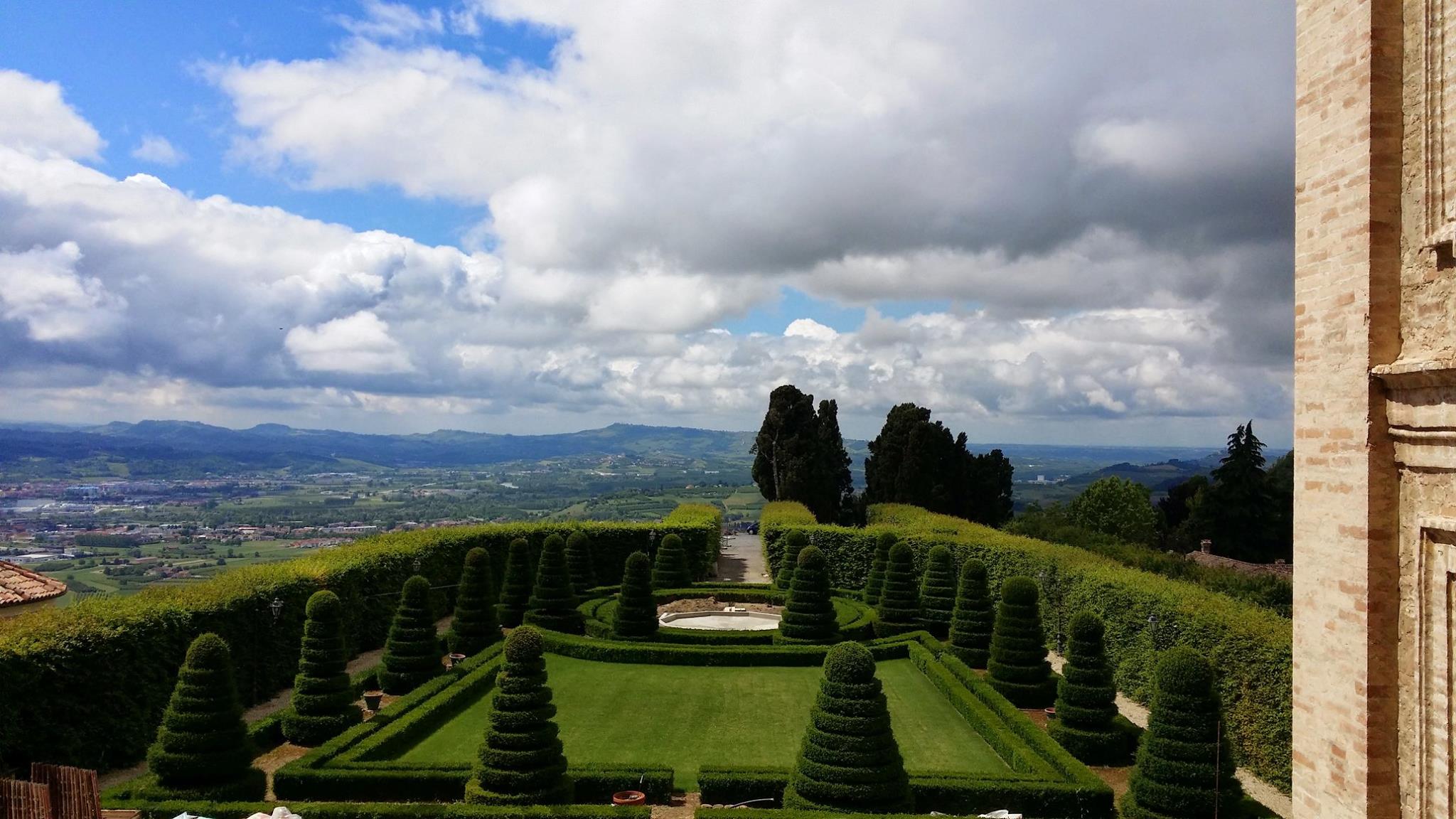
Guarene Castle
This post is also available in:
 Italiano (Italian)
Italiano (Italian)
Plunged in the sweet landscape of the Langhe, the Castle of Guarene (in the province of Cuneo) has been there since the Middle Ages, when it used to be a stronghold. In 1700, it became the new summer residence of the Roero Counts: the current building was designed and built by Count Carlo Giacinto, between 1726 and 1772, who transformed it into an imposing three-storey building, and then it was completed by his sons Traiano and Teodoro: it was eventually surrounded by some elegant Italian gardens. Carlo Giacinto Roero was an enlightened aristocrat, amateur architect, close to the court architect Filippo Juvarra, who designed the façade of the castle.
The latter is now a house-museum, as well as a luxury hotel, and it is open to the public.
The most significant rooms are fifteen, distributed on both sides of the central hall of honour.
Among them, there is the Bishop’s Room, one of the most spectacular examples of the so-called “bandera” decoration, with imaginative creations embroidered with polychrome wool on peculiar cotton fabric; the Blue Room, where the “bandera” embroideries are arranged within slender garlands and floral tufts; two Chinese Rooms, joyfully covered with “China-style wallpaper” brought from the far East in the second half of the XVIII century (the shipment actually arrived in London, then reached Marseille by sea and was eventually delivered to the castle owners using pack animals).
Not to mention the dining room, the gallery and the music room, with wonderfully frescoed ceilings; the library, on the other hand, has accumulated hundreds of preciously bound books over the centuries.
The castle also houses many paintings, including the beautiful “Madonna della Cappella”, the landscapes of Scipione and Vittorio Amedeo Cignaroli, and about eighty portraits of princes, kings, prelates, ladies and knights, as well as a lot of antique furniture, including some finely carved chests and trunks of the XVII century, but also some Louis XVI works of art.
The garden
Created by Count Carlo Giacinto Roero di Guarene together with the gardener of Castello di Govone (the works started in 1740), the green area is a splendid example of an Italian and French garden, with highly scenographic features: the main garden extends to the south, in axis with the castle. Built in 1748, with hornbeam hedges, it was redesigned in 1757 with the addition of some cypresses, and then again in the early XX century.
It now features the shape of an exedra, bordered by espaliers of hornbeams (Carpinus betulus) and divided into two sections by box hedges, flanked by eighteen large yews (Taxus baccata) pruned as overlapping discs. Other formal hornbeam hedges, located to the south, beyond the exedra, extend the perspective view on the valley.
On a lower terrace, on the side facing east, there is another formal garden called “Maneggio”: it features a triangular in shape and fruit trees of the XVIII century; this garden follows the patterns of the French boqsuet dècouvert, with low hornbeam hedges and hornbeam plants growing in a spherical form and some yews pruned, again, as overlapping discs.
The hedges surround the flower beds of different geometric shapes, arranged symmetrically and respecting the central axis of the garden.
A recent renovation has brought the garden back to its original splendour.
This post is also available in:
 Italiano (Italian)
Italiano (Italian)
Contatti
Via Alessandro Roero 2 - Guarene (CN)(CN)
0173 441332
http://www.castellodiguarene.com
Altre info
a pagamento
tutto l'anno, il sabato e la domenica
10-11.30 e 15-17.30



